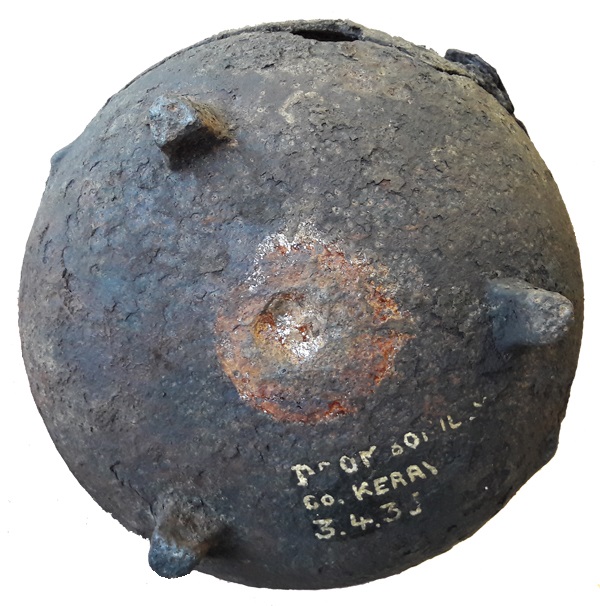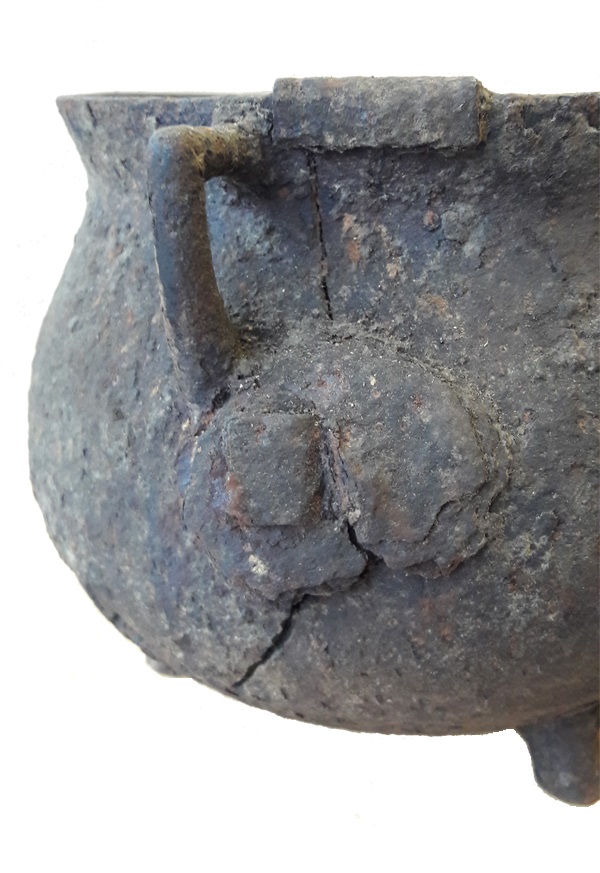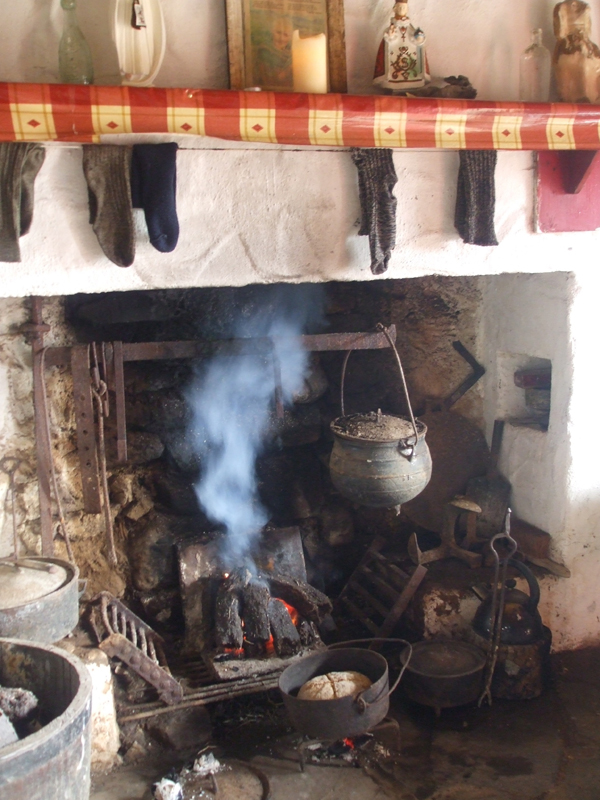19th Century
Three legged skillet
Example of a nineteenth century metal skillet.
By Noel CampbellDescription
This three legged, metal skillet, known in the Irish language as a sgiléad or a scilléad, was bought between 1855 and 1885 but may have been made prior to that period. This relatively small skillet measures 14cm high and 18.5cm wide from handle to handle. During its functional phase, the skillet cracked and received crude repairs by a blacksmith. The smith drove two iron rivets into the pot to hold iron patches within and without the breaks. One of the patches along with its rivet have since come loose leaving a hole exposed in the side of the skillet.

What were skillets used for?
Skillets were used in the cooking of various foods within the home. This skillet (F:1935.8) was used for boiling potatoes or fish but skillets, of all sizes, could accommodate various foods and greater quantities. The skillet was hung over an open fire on a fire crane using pot hooks that were first inserted into the pot’s handles. The fire crane in its simplest, common form is an iron upright fitted beside the fire with a horizontal bar at right angles which is often strengthened by a diagonal support. The fire crane could be swung outward into the room for easier access to the pot and to avoid the heat of the fire. Embers from the fire were often placed on the lid of the skillet to hasten the cooking process.

How did the NMI acquire this object?
This object was acquired by the Director of the NMI, Dr Adolf Mahr in 1935 for the Museum’s growing ‘folk collection’. This skillet was of particular interest to the NMI because of the rudimentary repairs that extended the life of the pot. Though an unassuming object, Dr Mahr believed at the time of acquisition that this example “will be of the greatest possible value to future workers in the field”. Prominent Swedish ethnologist, Dr Åke Campbell became aware of, and was interested in, the skillet and its related objects through his close connections with Irish folklorists. As was common in the early days of the ‘folk collection’, a local intermediary initially sourced this object and recommended it to the Museum. In this instance, the intermediary was Dermot O’Sullivan, a national school teacher in Lehud, Tuosist, Co. Kerry. The original provenance of the skillet is not known.

The NMI offered and paid a generous price for the skillet and its related objects. Dr Mahr commented to Mr O’Sullivan at the time that he hoped the price would encourage further objects to come forward and he was grateful to have an enthusiastic group of collectors in County Kerry “where we have not had many for a considerable time”. The skillet is permanently housed in the reserve collection of the NMI’s Folklife Division and is not on public display.
References
Danaher, Kevin (1999). Irish Country Households, Cork: Mercier Press
Evans, Estyn. ‘The Fireside’, (1943). Journal of the County Louth Archaeological Society, Vol. 10, No. 3, pp. 196-199
Fenton, Alexander & Trefor M Owen (eds), (1981). Food in Perspective, Proceedings of the Third International Conference on Ethnological Food Research, Edinburgh: John Donald Publishers Ltd.
Location:
Three legged skillet is located at:
In Storage
Previous artefact:
Thomas Matthew Ray's Collection and Archive
Next artefact:
